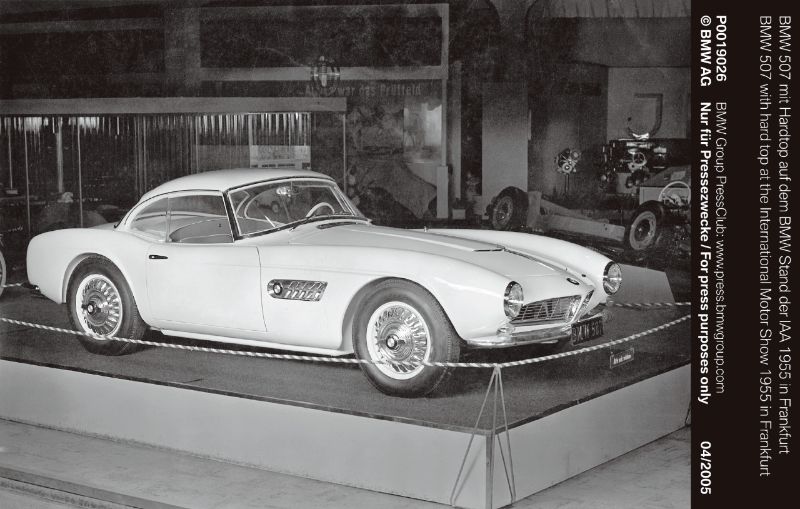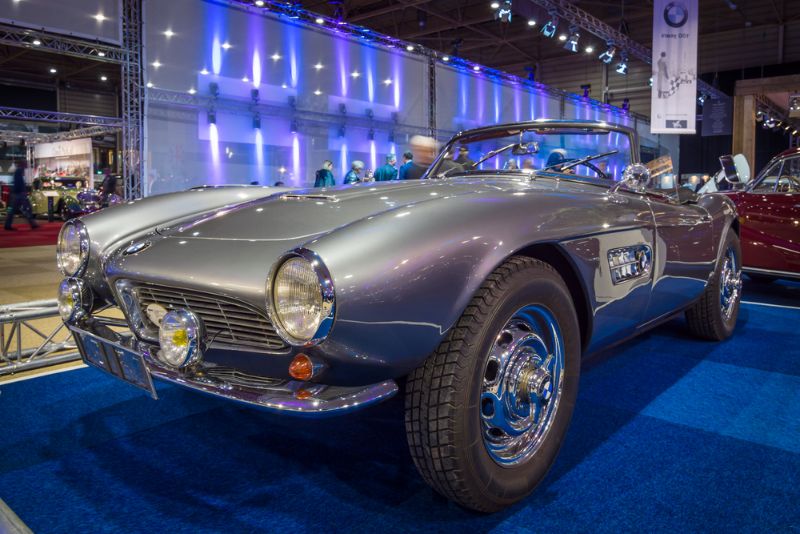
Elvis` BMW 507
The BMW 507 only lasted through a few years of production, from 1956 to 1959. Over this time, just 252 units were built, so if you find one today, it will be priced high thanks to rarity. BMW produced the 507 with the goal of exporting it to the United States, with thousands of units going there every year. Unfortunately, the high cost of the vehicle led to the significantly lower production figures and a quick end to the auto’s run.
Creating the 507

BMW 507 radiograph
The idea for the BMW 507 came from Max Hoffman, an American automobile importer. In 1954, he convinced management at BMW to create a variation of the BMW 501 and 502 saloons that would be a roadster. Hoffman suggested that this roadster would fill the gap found in the current competitors that separated the underpowered MG and Triumph from the expensive Mercedes-Benz 300SL. Fritz Fiedler, the BMW engineer, designed the rolling chassis and focused on using components that already existed. Hoffman rejected Ernst Loof’s early body designs, saying that they were unappealing. This led to Hoffman insisting that BMW contract Albrecht von Goertz, who designed both the BMW 507 and the 503.
Fuel Tank Variations

In 1956 and early on in 1957, BMW built 34 of the 507 Series I models. They held a welded aluminum fuel tank holding 29.1 U.S. gallons behind the rear seats. An unfortunate consequence of this design was that it limited passenger space and trunk room. Additionally, the placement of the tank led to a fuel smell inside the auto if the hardtop was in position or the hood was up. BMW changed this for the Series II and later models, dropping the fuel tank size to 17.4 U.S. gallons and placing it underneath the trunk while leaving enough room for a spare tire.
Basic Design

The 507 used a frame that was a shortened version of the one found on the 503. Instead of the 111.6-inch wheelbase on the 503, the 507 had a 98-inch wheelbase. The BMW 507 measured 190.4 inches long and 49.5 inches high. It weighed about 2,930 pounds. The body was almost fully made from hand-formed aluminum, meaning that no two models were identical. Just eleven models had the hand-fabricated removable hardtop, which was an option.
Mechanical Components

source: ShutterStock
The 507 used BMW’s aluminum-alloy OHV V8 engine with 193.3 cubic inches of displacement and pushrod-operated overhead valves. This engine included high-lift cams, polished combustion chamber surfaces, two Zenith 32NDIX 2-barrel carburetors, a different spark advance curve, and a chain-driven oil pump. It also had a 7.8:1 compression ratio. The engine delivered 150 metric horsepower and worked with a four-speed manual transmission with close ratios. In a contemporary road test, the 507 reached a top speed of 122 mph and made it from 0 to 62 mph in 11.1 seconds.
The front suspension in the BMW 507 had parallel double wishbones complete with an anti-roll bar and torsion bar springs. The rear suspension featured a live axle that also had torsion bars. It sat by a central transverse A-arm and Panhard rod, controlling braking and acceleration forces. The Alfin drum brakes were 11.2 inches in diameter, and you could opt for power brakes.
